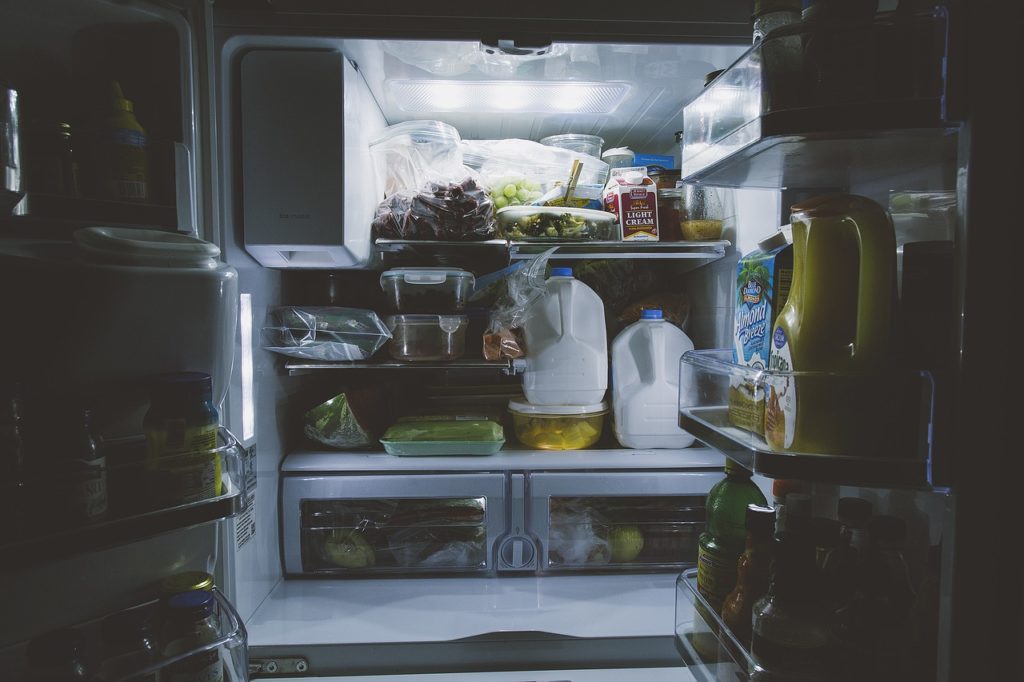New research shows reducing food waste at home starts in your refrigerator
 Pexels from Pixabay
Pexels from PixabayWhen you go grocery shopping, you probably don’t expect to throw out half of the things that you buy. Science says you might anyway. Reducing food waste at home, which is an important part of reducing food waste in general, hinges on your fridge habits.
A new study from Ohio State University found that people waste more of the food in their refrigerators than they expect to. A number of factors contribute to the waste, including age, cleaning habits and misunderstanding expiration date labels.
Households are significant contributors to food waste. According to the Food and Agriculture Organization of the United Nations, about one-third of the food is wasted instead of eaten. About 40 percent of that food waste is generated by homes, rather than restaurants, grocery stores or farms.
“[Households are] an important contributor to the amount of food waste,” said Brian Roe, the study’s senior author and a professor of agricultural, environmental and development economics at The Ohio State University. “Plus, it uses a lot of additional energy and resources to get food all the way to your refrigerator before it ends up in a landfill.”
When it comes to studying food waste, though, household refrigerators are often a black (or white or chrome) box of data.
“There’s data about the food we purchase, the food we eat, even a little bit of data about the type of food we throw out,” Roe explained. “When it comes to how we actually maintain that food, there isn’t much data about what’s going on inside American homes.”
How much food is wasted at home?
The researchers surveyed over 300 participants across the country about the food currently in their refrigerator. The survey asked participants to choose random food items from their inventory and answer a few specific questions about them, including the likeliness that they would actually eat the item rather than throw it out.
A week later, the researchers then sent a follow-up survey to find out what happened to that food. Over half of the original participants responded.
Survey participants expected to eat 97 percent of the meat in their refrigerators. In reality, they finished only about half. Of the 94 percent of vegetables participants planned to eat, only 44 percent was actually consumed. Participants thought they would eat 71 percent of their fruit and 84 percent of their dairy, but finished 40 percent and 42 percent, respectively.
Why is food wasted at home?
The surveys asked about a variety of factors that may have influenced the decision to toss food, including cost, smell and appearance.
One variable stood above the rest: ambiguous date labels. What is the difference between “best by,” “use by” and “sell by,” anyway?
“The phrases are not used consistently throughout the country,” Roe said. “There is guidance from [U.S. Department of Agriculture] and [Food and Drug Administration], but it’s just guidance.”
Roe explained that “best if used by” or “best by” is usually used as a quality date and the term “use by” as a safety date. “Sell by” is technically for the grocer to use to organize their display case and not for the consumer to determine freshness.
Roe said that ideally, producers would use more clarity and consistency in date labeling practices. For now, though, he said that with a few exceptions (soft cheese and deli meats were the first that came to mind), take date labels with a grain of salt and sniff out the truth for yourself.
“We all know people who look at that date and see it as the law or a harbinger of imminent demise,” Roe laughed. “Usually, it’s a quality date, saying, ‘Smell this carefully and decide.’”
The study also looked at individual food consumption behaviors, including refrigerator cleaning frequency, grocery shopping duration and nutrition label reading habits.
“People that check their refrigerators on a regular basis actually tended to waste a little bit more,” Roe said.
Nutrition label readers, however, were more likely to use food instead of tossing it. The researchers aren’t sure why, but Roe guesses it has something to do with meal planning.
“Maybe label readers are thinking deeply about their menus and diets,” Roe posited. “Comprehensive planners end up using items.”
Another finding: younger households were more likely to waste, while households of those 65 and older were less likely to toss food. Roe postulated a number of possible explanations.
“One might be more volatile schedules [or] perhaps less accumulated skill in planning and preparing foods,” Roe said. “I could see any of those as a logical explanation, but there is no evidence as to which is the dominant one.”
Science-based tips to reducing food waste at home
Based on his research, Roe suggested some strategies for reducing food waste at home.
Prioritize using what you already have in the refrigerator to reduce food waste and save money on groceries. Roe said that there are online and mobile applications that can help you plan how to use the food you already have.
Roe also suggested organizational strategies to help minimize food waste.
“I’ve seen people have an area in the refrigerator called the ‘Eat First Area,’” Roe said. “People put items at the front, so casual household members cruising for a snack can pick those up first and use it before it reaches its expiration date.”
